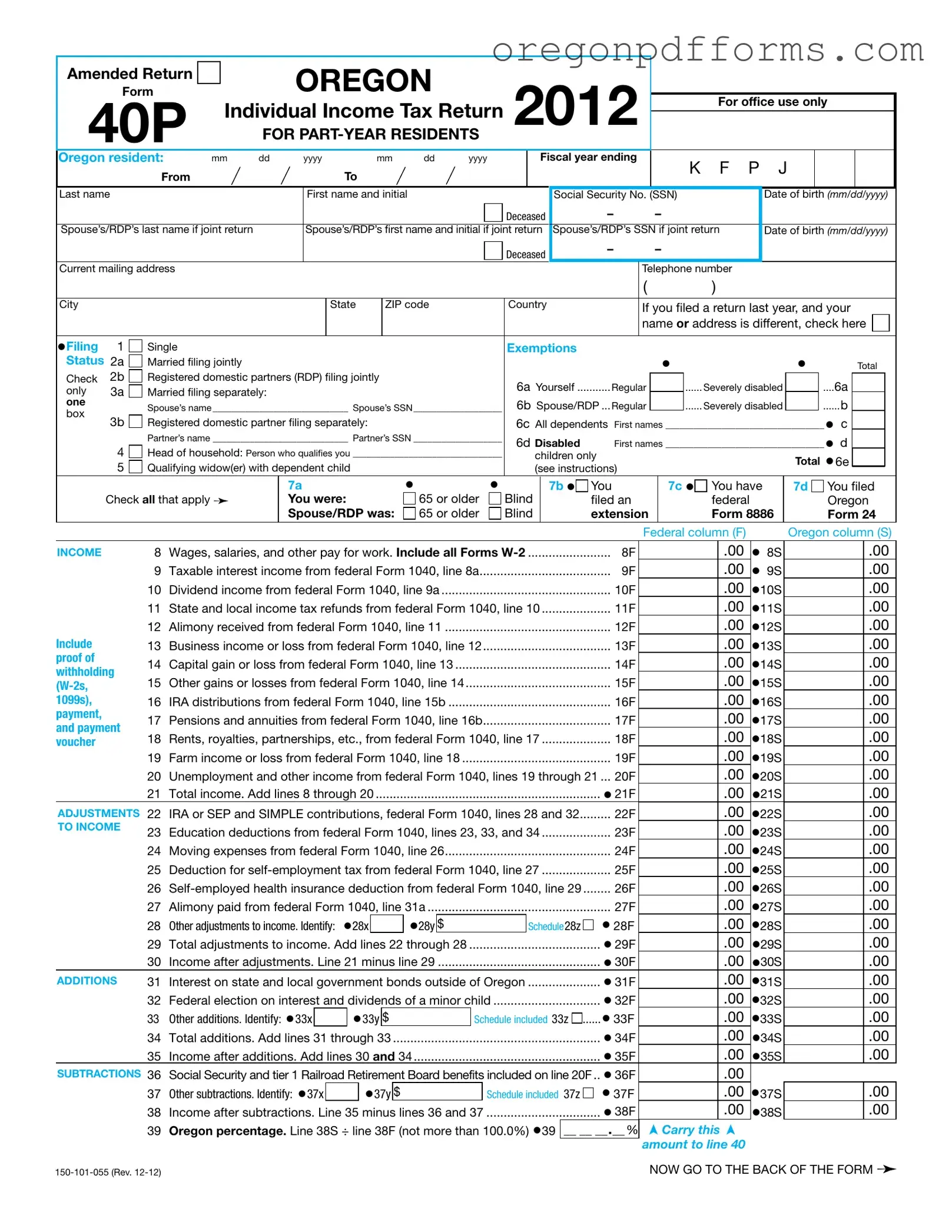The Oregon 40P form is a critical document for part-year residents who need to file their individual income tax returns in the state of Oregon. This form allows individuals who moved into or out of Oregon during the tax year to accurately report their income and calculate their tax liability based on the time they spent as residents. The form collects essential personal information, including names, Social Security numbers, and addresses of the taxpayer and their spouse or registered domestic partner, if applicable. It also outlines various filing statuses, such as single, married filing jointly, or head of household. The 40P form requires taxpayers to report their total income from various sources, including wages, dividends, and business income, while also allowing for adjustments to income and deductions. Additionally, the form includes sections for calculating tax credits and determining any overpayment or amount owed. By providing a structured format for reporting income and deductions, the Oregon 40P form ensures that part-year residents comply with state tax laws while accurately reflecting their financial situation during the tax year.
